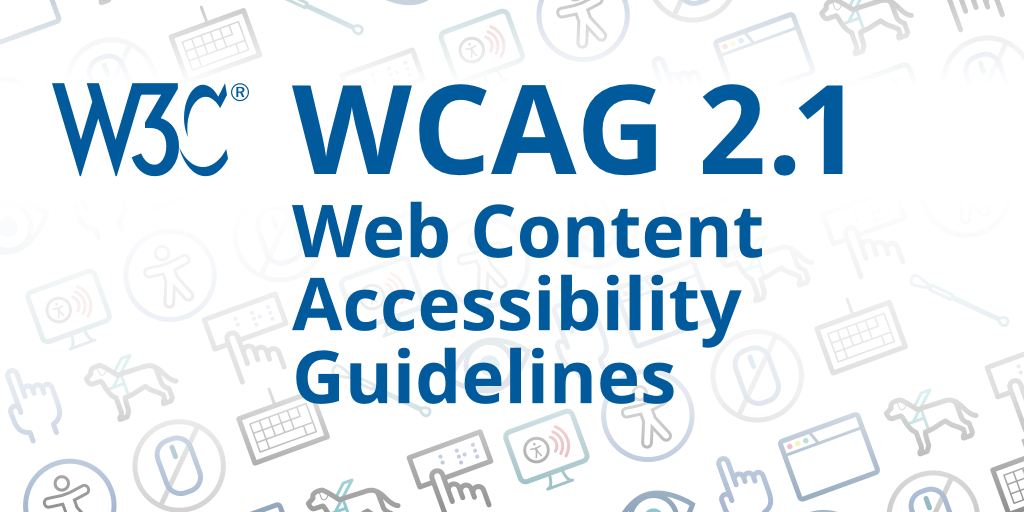News
Web Content Accessibility Guidelines (WCAG) 2.1 is now a W3C Recommendation
5 June 2018 | Archive
 The Accessibility Guidelines Working Group has published Web Content Accessibility Guidelines (WCAG) 2.1 as a W3C Recommendation. WCAG 2.1 provides recommendations for making web content more accessible to a wider range of people with disabilities, including auditory, cognitive, neurological, physical, speech, visual disabilities. The guidelines address accessibility of web content on desktops, laptops, tablets, and mobile devices. Following these guidelines also makes your web content more usable to all users in a variety of situations. For more information, see the blog post WCAG 2.1 is a W3C Recommendation and see What’s New in WCAG 2.1. Read about the Accessibility Guidelines Working Group and the Web Accessibility Initiative (WAI). Please see our Press Release.
The Accessibility Guidelines Working Group has published Web Content Accessibility Guidelines (WCAG) 2.1 as a W3C Recommendation. WCAG 2.1 provides recommendations for making web content more accessible to a wider range of people with disabilities, including auditory, cognitive, neurological, physical, speech, visual disabilities. The guidelines address accessibility of web content on desktops, laptops, tablets, and mobile devices. Following these guidelines also makes your web content more usable to all users in a variety of situations. For more information, see the blog post WCAG 2.1 is a W3C Recommendation and see What’s New in WCAG 2.1. Read about the Accessibility Guidelines Working Group and the Web Accessibility Initiative (WAI). Please see our Press Release.
Canonical EXI is now a W3C Recommendation
7 June 2018 | Archive
The EXI Working Group has published Canonical EXI as a W3C Recommendation. The EXI 1.0 format specifies the syntax of a class of resources called EXI streams. It is possible for EXI streams that are equivalent for the purposes of many applications to differ in physical representation. The Canonical EXI Recommendation specifies a method to get a canonical form, to be used with digital signatures. Even restricted and very limited devices should be able to create or check a canonical EXI stream. This applies to devices that may be able to speak only a given language (according to an XML Schema) or support only a subset of all EXI features.
WebDriver is now a W3C Recommendation
5 June 2018 | Archive
The Browser Testing and Tools Working Group has published WebDriver as a W3C Recommendation. WebDriver is a powerful technology for enabling automated cross-browser testing of Web applications and more. The WebDriver specification defines a set of interfaces and a wire protocol that are platform-neutral and language-neutral and that allow out-of-process programs to remotely control a browser in a way that emulates the actions of a real person using the browser. More information is available in the blog post: WebDriver Motors on to W3C Recommendation.
